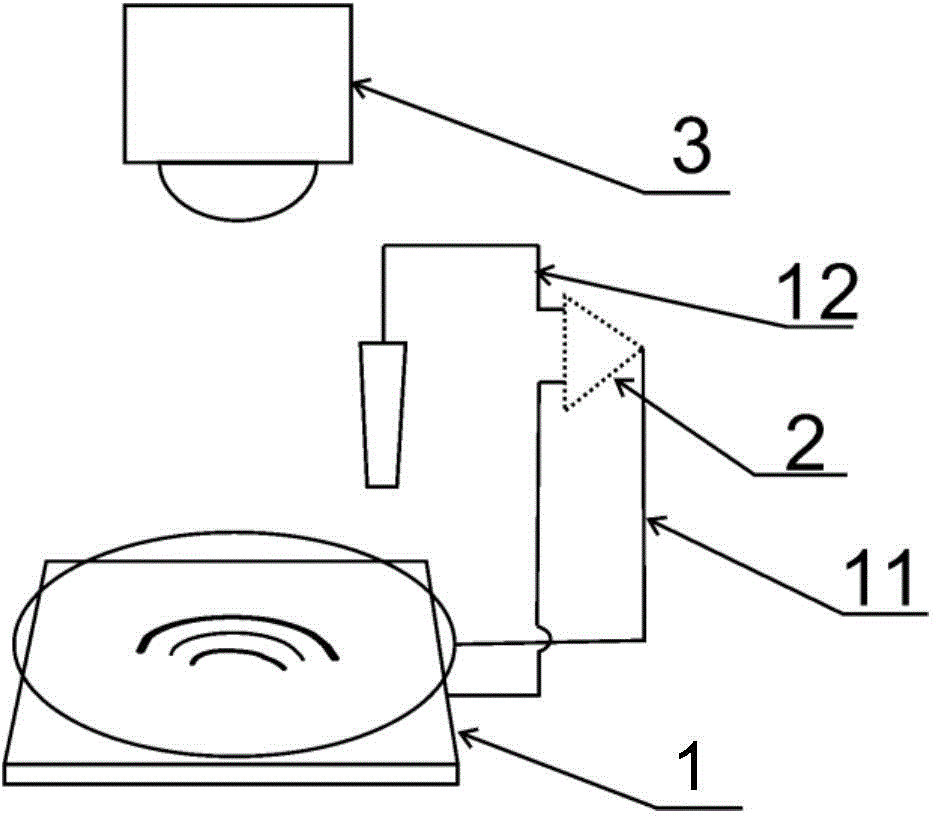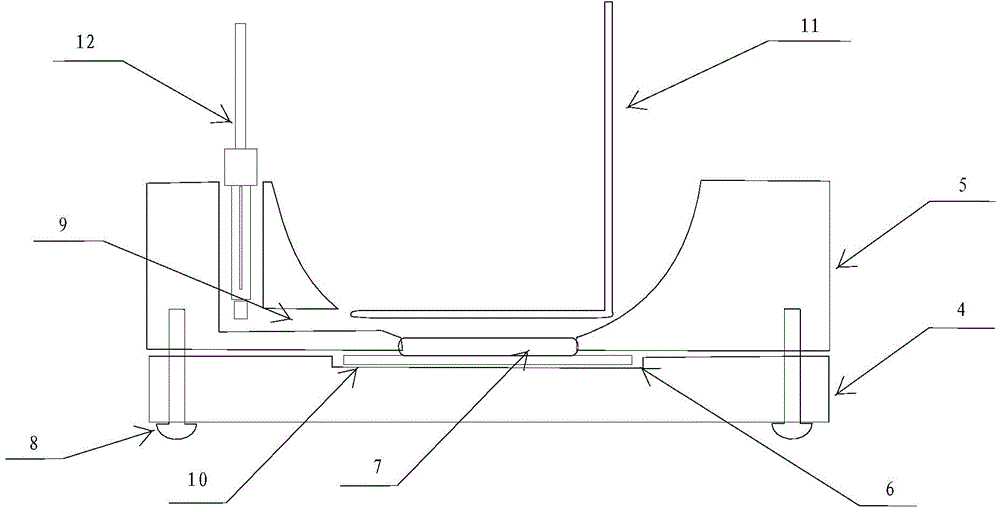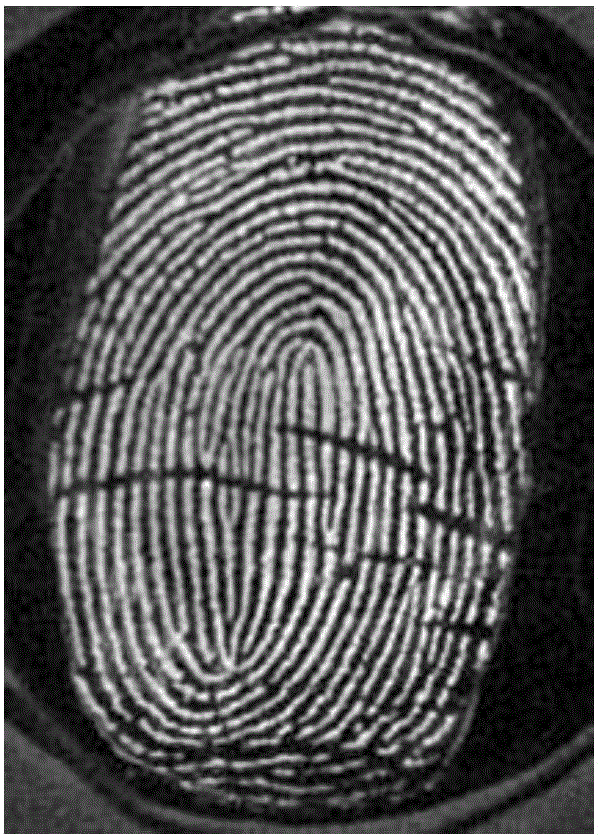Potential fingerprint imaging method based on electrochemiluminescence immunoassay
A luminescence immune and electrochemical technology, applied in the fields of analytical chemistry and fingerprint detection, can solve the problems of unfingerprint detection and imaging, and achieve the effects of rapid detection, convenient rapid real-time detection, and simple method.
- Summary
- Abstract
- Description
- Claims
- Application Information
AI Technical Summary
Problems solved by technology
Method used
Image
Examples
Embodiment 1
[0068] (1) Dip a small amount of fresh blood on the finger, and press a blood fingerprint on the gold-plated polystyrene sheet;
[0069] (2) Immunolabeling: draw a circle around the fingerprint with an immunohistochemical pen to avoid the diffusion of the antibody solution, and dissolve 100 μL of 0.1 mg / mL goat anti-human IgG (solvents for dissolving antibodies contain 2% BSA, 0.1% Tween -20 PBS) was dropped on the fingerprint, incubated at room temperature for 30min, rinsed with PBS-T to wash away unbound antibody, dried the surface with argon, and then 100μL 0.05mg / mL rabbit anti-goat IgG / HRP was dropped On the fingerprints, incubate at room temperature for 30 min, rinse with PBS-T and dry with argon.
[0070] (3) Electrochemiluminescence imaging: Place the above-mentioned gold-plated polystyrene sheet (working electrode), counter electrode and reference electrode in the electrochemical reaction cell, add the electrochemiluminescence reaction solution, power on the electroch...
Embodiment 2
[0073] 1. Three-step method
[0074] (1) Press a sweaty fingerprint on the gold-plated polystyrene sheet;
[0075] (2) Immunolabeling: draw a circle around the fingerprint with an immunohistochemical pen to avoid the diffusion of the antibody solution, drop 100 μL 0.1 mg / mL epidermal growth factor antibody on the fingerprint, incubate at room temperature for 30 minutes, rinse with PBS-T Wash off unbound antibodies, dry the surface with argon, then drop 100 μL 0.01 mg / mL goat anti-rabbit IgG / biotin on the fingerprint, incubate at room temperature for 30 min, rinse with PBS-T and dry with argon, Then 100 μL of 5 μg / mL streptavidin / HRP was dropped on the fingerprint, incubated at room temperature for 30 min, rinsed with PBS-T and dried with argon.
[0076] (3) Electrochemiluminescence imaging: Place the above-mentioned gold-plated polystyrene sheet (working electrode), counter electrode and reference electrode in the electrochemical reaction cell, add the electrochemiluminescenc...
Embodiment 3
[0084] 1. Three-step method
[0085] (1) Press a sweaty fingerprint on the gold-plated polystyrene sheet;
[0086] (2) Immunolabeling: draw a circle around the fingerprint with an immunohistochemical pen to avoid the diffusion of the antibody solution, drop 100 μL 0.1 mg / mL lysozyme antibody on the fingerprint, incubate at room temperature for 30 minutes, rinse with PBS-T to wash To remove unbound antibodies, dry the surface with argon gas, then drop 100 μL 0.01 mg / mL goat anti-rabbit IgG / biotin on the fingerprint, incubate at room temperature for 30 minutes, rinse with PBS-T and dry it with argon gas, then 100 μL of 5 μg / mL streptavidin / HRP was dropped on the fingerprint, incubated at room temperature for 30 min, rinsed with PBS-T and dried with argon.
[0087] (3) Electrochemiluminescence imaging: Place the above-mentioned gold-plated polystyrene sheet (working electrode), counter electrode and reference electrode in the electrochemical reaction cell, add the electrochemilu...
PUM
| Property | Measurement | Unit |
|---|---|---|
| concentration | aaaaa | aaaaa |
| concentration | aaaaa | aaaaa |
| concentration | aaaaa | aaaaa |
Abstract
Description
Claims
Application Information
 Login to View More
Login to View More - R&D
- Intellectual Property
- Life Sciences
- Materials
- Tech Scout
- Unparalleled Data Quality
- Higher Quality Content
- 60% Fewer Hallucinations
Browse by: Latest US Patents, China's latest patents, Technical Efficacy Thesaurus, Application Domain, Technology Topic, Popular Technical Reports.
© 2025 PatSnap. All rights reserved.Legal|Privacy policy|Modern Slavery Act Transparency Statement|Sitemap|About US| Contact US: help@patsnap.com



